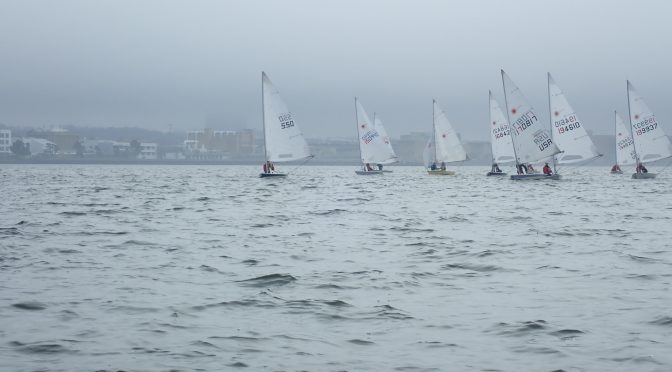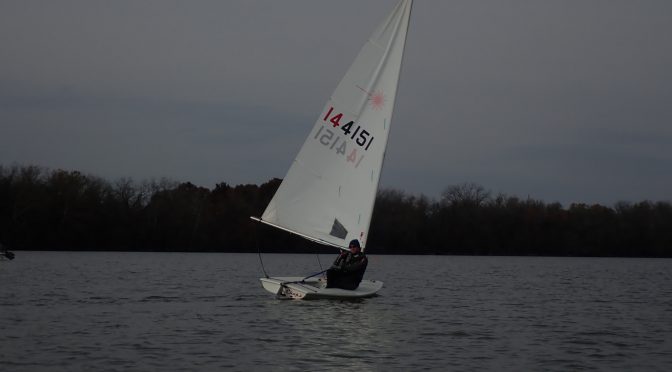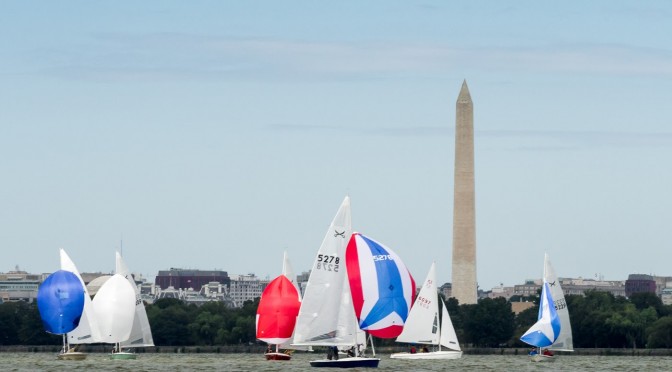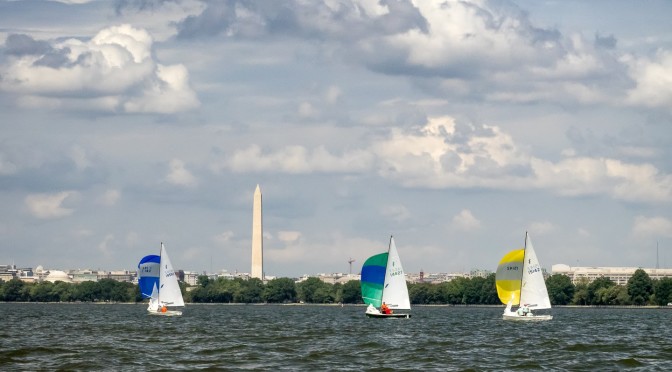In a breach of tradition, I was asked to provide some thoughts on today’s racing.
I am not going to recount each race, but as we all know the breeze was light all day and the current was slack for the first race, but progressively got stronger heading down river (and upwind) making the beats short and the down wind legs seem much longer. The pin end was favored to varying degrees throughout the day.
The upwind leg was short so it was imperative to get off the line quickly today as there was little opportunity to recover from a bad start (as a learned after flipping at the start…).
What worked for me today was to get a clear air start at or near the pin, get the boat moving as fast as possible and then look for an opportunity to tack to port and towards the windward mark. Simple in concept, sometimes tougher in execution….
I think in the light conditions we had today it is critically important to constantly seek to find more power in the rig. This means a loose outhaul (one to one and one half hands at the middle of the boom), loose Cunningham (or maybe just a tiny bit but not enough to remove wrinkles), and Vang slightly less than block to block tension (You want the mast to straighten when you ease the sheet for power).
I don’t think I ever was able to “two block” my sheet tension today, but generally had my sheet eased out between 6-18 inches depending on wind pressure.
The key to light air speed is to ease the sheet for power to get the boat moving. As the sail powers up, you can then apply more weight on the rail, which translates force into your foils and increases boat speed. As the speed builds, you can trim the main for greater efficiency. The trick is not to let the boat stall after you trim in more closely. After you trim in and you start to feel the boat lose power you have to immediately ease the sheet again to get more power. Adjustments should be pretty subtle unless there is a big wind speed change. I believe this cycle of easing for power, applying weight to the rail to increase speed, and then trimming as the boat accelerates is key to being fast in light conditions.
Similarly, I think the most important factor downwind was working to keep the boat powered up. Whenever it got really light downwind I felt it was fast to either head up 15-20 degrees or sail aggressively by the Lee to increase flow across the sail. Once the boat was moving well, then it was time to head more towards the mark. I think I ended up gybing on every down wind leg because I sailed “hotter” angles and almost never dead down wind.
Hope a few folks find this helpful. Thanks to all for sailing today and Happy New Year!
Keith








